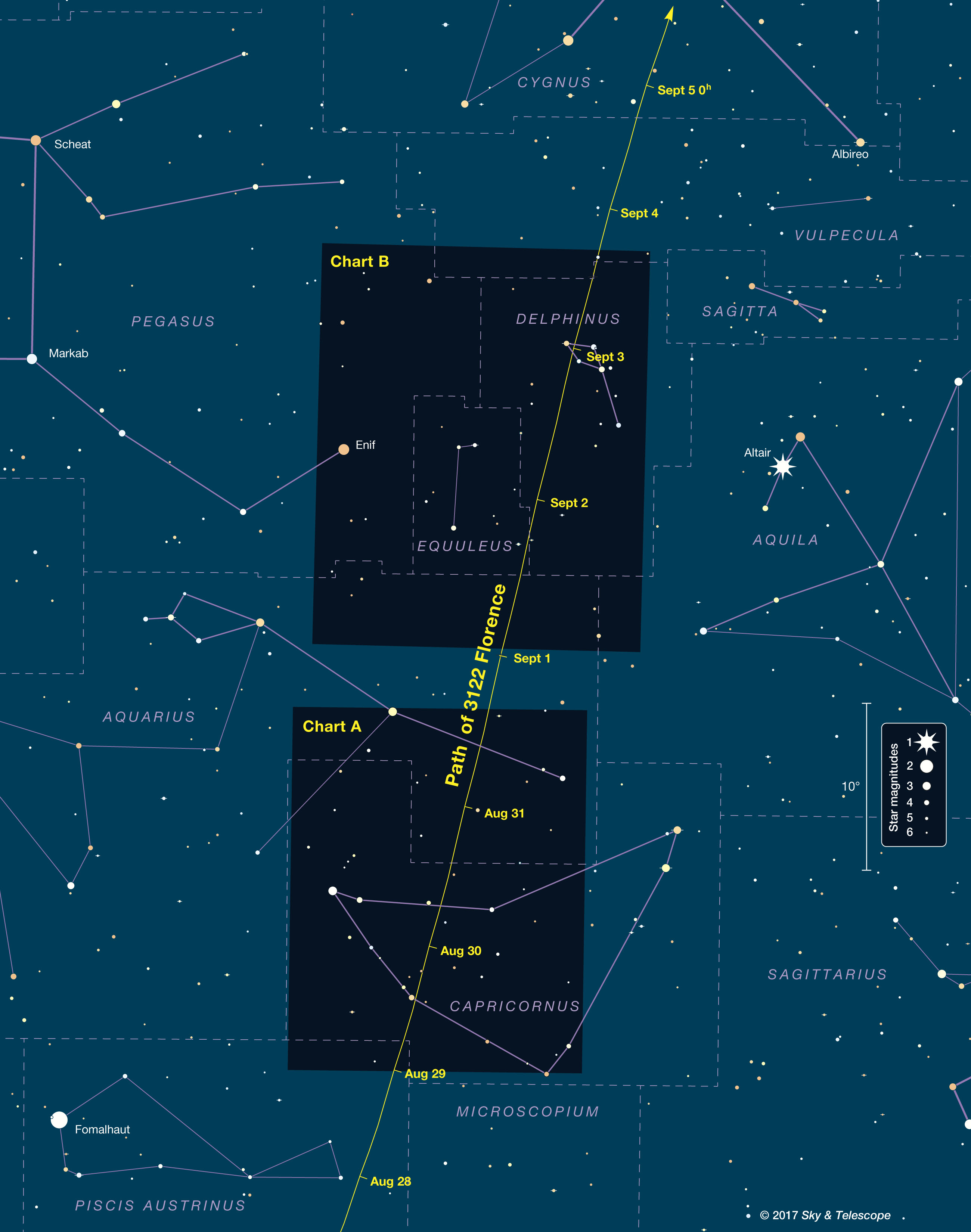



An asteroid named Florence, one of the largest of the near-Earth asteroids, will approach close to Earth at the end of August, and will fly safely past our planet on September 1. At its closest point, Florence will be 4.4 million miles (7.0 million kilometers) from Earth, or about 18 times the average Earth-Moon distance. Although many known asteroids have passed by closer than this, all of them were smaller asteroids. Florence is the largest asteroid to pass this close to our planet since the first near-Earth asteroid was discovered over a century ago.
The September 1 flyby of Florence will provide astronomers with an excellent opportunity to make detailed measurements of a large near-Earth asteroid. In particular, radar scientists expect to obtain high-resolution images of Florence that could reveal surface features as small as about 10 meters (30 feet).
Although its orbit is well established, comparatively little is known about this large asteroid’s physical properties. Infrared measurements from NASA’s Spitzer Space Telescope and the NEOWISE spacecraft indicate that Florence is roughly 2.7 miles (4.3 kilometers) in size, and measurements of its brightness variations indicate that it rotates once every 2.36 hours. As it approaches in late August and early September, it is expected to brighten to 9th magnitude, making it easily visible, even using a small telescope.
Asteroid Florence was discovered in 1981 and named in honor of Florence Nightingale (1820-1910), the founder of modern nursing. Tracking observations of asteroid Florence span nearly 40 years, and its orbit is already well known. The orbital calculations indicate that asteroid Florence poses no risk of colliding with Earth for many centuries to come.

